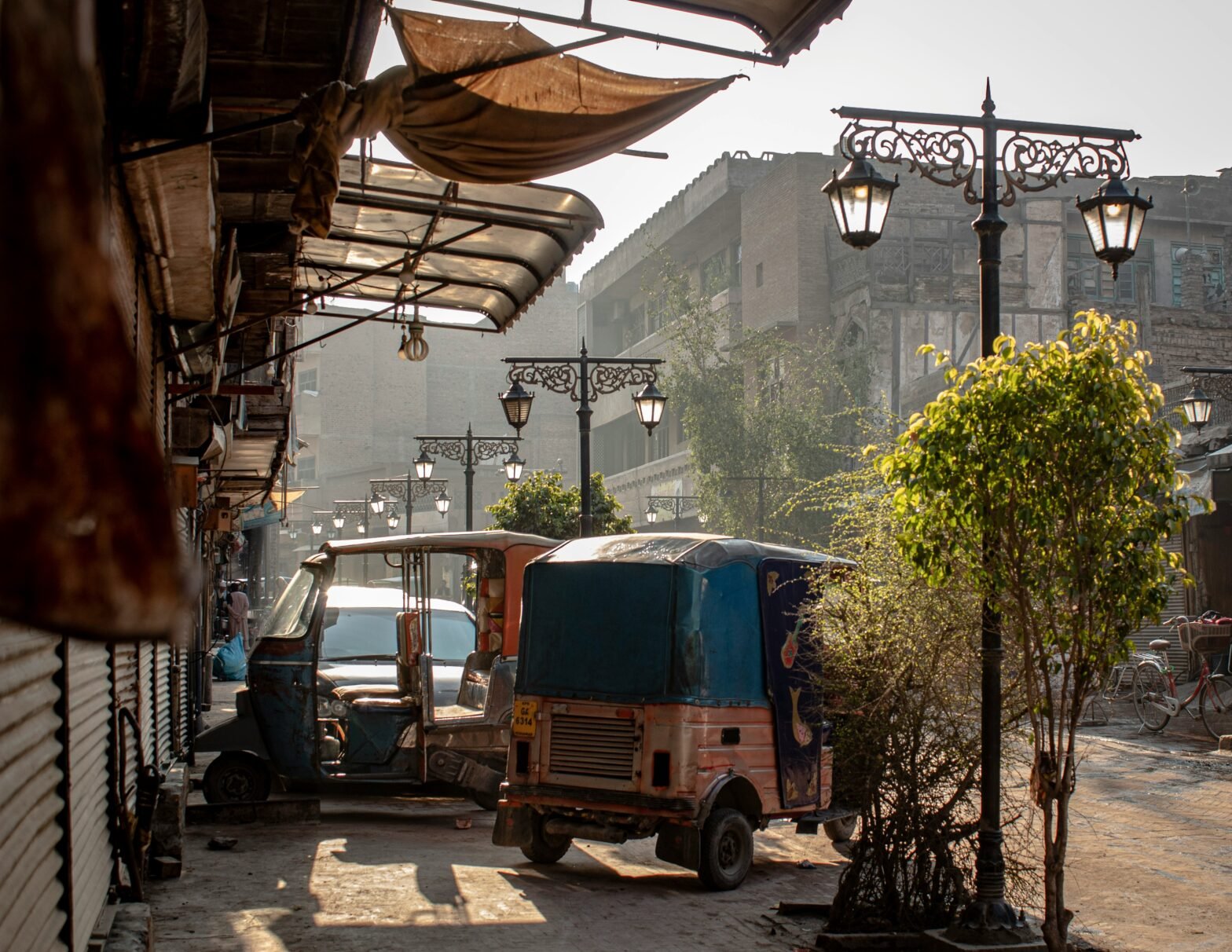Tips & Advices
Is Travel To India And Pakistan Safe For Americans Right Now?

South Asian neighbors India and Pakistan are rich in culture and, respectively, have beautiful landscapes, bustling cities, and various historical sites. However, tensions have recently re-escalated between the two countries following a devastating attack on civilians in late April in Kashmir, leaving 26 dead.
Due to various concerns regarding crime, terrorism, unrest, and other factors, Americans visiting India or Pakistan are discouraged from traveling altogether or recommended to travel with caution.
Official Travel Advisories
The State Department currently has a Level 2 travel advisory for India, meaning U.S. travelers should “exercise increased caution.” The concerns revolve around crime, terrorism, political unrest, and other potential risks in India.
The authority has a heightened travel advisory for Pakistan, listing the latter as a Level 3 zone, for which people are urged to “reconsider travel.” The State Department says its concerns in Pakistan are due to terrorism and other risks.
Both travel advisories warn visitors to avoid being near the India-Pakistan border “due to the potential for armed conflict.” Additionally, travelers should avoid the Line of Control, where terrorism or armed conflict could occur. As the authority noted, terrorism could happen suddenly and without warning.
The World Health Organization (WHO) has no specific travel notices for either country. The Centers for Disease Control and Prevention (CDC) has no health notices for India, but two for Pakistan. The latter country has a Level 2 health notice for the global polio outbreak, for which travelers should “practice enhanced precautions.” Additionally, there’s a Level 1 health notice for the global dengue and measles outbreaks, as well as drug-resistant typhoid fever in Pakistan. For Level 1 notices, travelers are advised to “practice usual precautions.”
Tensions In Kashmir
The terrorist attack in India-administered Kashmir was the worst on civilians in the region in decades. The attack killed 25 Indian nationals and one Nepali. Indian officials called out Pakistan’s alleged “support for cross-border terrorism,” but the latter country’s government denied being behind the tragic incident. The Kashmir Resistance, a militant group, reportedly claimed responsibility.
Both countries revoked visas for the other’s nationals and have since taken other retaliations against one another. According to Al Jazeera’s May 7 reporting, much of the air travel scheduled within India and Pakistan’s airspace (particularly near the border) has been delayed, canceled, and/or rerouted. Additionally, India’s government has reportedly shut down some of the country’s northern airports. Several carriers have made changes, and travelers are encouraged to check in with their airlines if they have flights scheduled.
India has since launched strikes on nine different places in Pakistan and Pakistan-administered Kashmir, leaving 31 dead. According to CNN, Pakistan has confirmed that it has killed up to 50 Indian soldiers at the Kashmir border. Additionally, shelling by Pakistan’s military in India-controlled Kashmir has allegedly left a minimum of 12 civilians dead and 57 injured.
Are India And Pakistan Safe for Tourists and Solo Travelers?
Due to several risks, heightened tensions between India and Pakistan, and the ongoing conflict in Kashmir, many travelers would likely feel restricted and/or unsafe in either country. Additionally, the State Department does not recommend solo travel in India, particularly for women.
Crime
Be wary of pickpocketing and theft in both countries, especially in public and public transportation. The State Department claims that Indian authorities “report that rape is one of India’s fastest growing crimes.”
Transportation
Transportation in India is dangerous and likely not what U.S. travelers are used to. The State Department notes that “India leads the world in traffic-related deaths.” Visitors should practice extreme care when navigating on foot, wear helmets on motorcycles, and note that they may not have access to seatbelts in vehicles. Locals widely use buses, but they can be accident-prone. Train travel is “generally safe,” but accidents still occur.
Traffic moves on the left in both countries. In Pakistan, drivers should anticipate significantly different road conditions and infrastructures, particularly at night and outside major cities. Visitors should practice caution and discernment regarding public transportation and taxis/rideshares.
Bank Safety Information
Be cautious of your surroundings when using ATMs.
Health
Only drink untampered and sealed bottled water – ideally by a major brand. Travelers – including children, the elderly, and those with respiratory and general issues – should reconsider travel to places in India with significant air pollution. In an emergency, taking a taxi or rideshare may be wiser than waiting on an ambulance.
Common Scams To Be Aware Of
ATM scams in India put you at risk of your card details getting into the hands of scammers.
How To Stay Safe In India And Pakistan
Take all the standard travel safety measures you can. Before your trip, educate yourself on your destination and register your travel with the State Department’s Smart Traveler Enrollment Program, aka STEP. While abroad, do not draw attention to yourself or flash money, jewelry, or valuables. Travel in a group if you can. Keep a form of identification with you at all times and avoid crowds. Always cooperative with the local authorities. Stay updated on the local news.
Be cautious of extremist groups or terrorism in places where Westerners generally frequent. Examples of those places include markets, hotels, restaurants, government facilities, etc.
In India, the State Department has dedicated information for staying safe while swimming, trekking, or going on wildlife safaris. Visitors should not travel to Jammu and Kashmir, the India-Pakistan border, Manipur, and portions of Central, Northeastern, and Eastern India.
In Pakistan, the State Department says not to travel to the Balochistan and Khyber Pakhtunkhwa Provinces, including the former Federally Administered Tribal Areas (FATA). The U.S. advises its travelers in Pakistan to have a “security plan” and flee the scene if there’s sudden military activity. If in the latter case and unable to leave, the State Department recommends sheltering in place. Also, travelers should dress conservatively.
Where To Stay In India And Pakistan
India is a vast country where safety varies. That said, tourists may consider Mumbai, Ahmedabad, Chennai, Pune, and Bangalore for a safe trip.
In Pakistan, Islamabad, the capital, and Lahore, a cultural hub, are both generally safe for visitors.
Always opt for highly rated hotels, ideally with concierge services, driver services (or recommendations), and on-site security. A good hotel may also be able to provide reputable and trustworthy local recommendations for tours, restaurants, and safe touristy things to do.
Best Time To Visit India And Pakistan
The best time to visit either country truly depends on where exactly you’ll be visiting, what activities you plan to do, and the weather you want to experience. Generally speaking, April through October is a good time to visit Pakistan.
For India, consider any time between October and March.
Should You Still Travel To India And Pakistan?
There are many safety concerns to consider before traveling to India and Pakistan. Health precautions, crime, terrorism, political unrest, and the ongoing conflict at the India-Pakistan border – including Kashmir and the Line of Control – should be seriously taken into account before a trip.
While neither country has a “Level 4 – Do Not Travel” advisory, both have specific areas that U.S. travelers are advised not to visit.
At this current time, many travelers may feel safest postponing their trip. However, if you travel to either country, it’s imperative to stay in secure areas, have a security plan, and register your trip with STEP. Also, update a loved one regularly with your itinerary and whereabouts. It’s crucial to read the State Department and CDC’s most up-to-date information ahead of your travels to either location.
Tips & Advices
The Critical Insurance Update You Can’t Ignore

Summer vacations are in full swing, and many travelers are planning beach holidays, cultural excursions, or adventure trips to some of the most popular summer destinations around the world. But while planning a summer getaway this year, a new move in the tourism sector is changing things up: mandatory travel insurance. While insurance was once optional, recent trends have made having it a rule across the world.
Many countries have made travel insurance mandatory as a condition of entry in recent years. Japan has joined nations like Russia, Georgia, Switzerland, Iran, Uruguay, Cuba, Costa Rica, and the whole of the Schengen region in making proof of insurance compulsory for foreign tourists. Why? The step is prompted by a steep increase in unpaid medical bills left behind by uninsured tourists.
The old freedom to buy insurance on one’s own terms is no longer applicable in many places, so this change is more than a challenge to travelers. There is even the possibility of travelers being denied entry or being pressured into buying costly, last-minute insurance. All the Schengen nations have long required a minimum of €30,000 (around $35,000 USD) medical coverage, but with more and more nations such as Japan mandating travel insurance (the move is currently in the planning stages), the trend is going global.
Travel insurance is no longer a matter of choice for travelers heading to an increasing number of destinations. With the recent surge in bookings for summer vacations, neglecting this new travel mandate can ruin even the most well-planned trips. Travelers must stay informed and comply with the new trend ahead of time. Here, we’ll discuss which countries require travel insurance for entry, why it matters, and how travelers can have a hassle-free, memorable vacation this summer.
Related
The U.S. Government Just Slapped One Of The World’s Safest Countries With A Travel Advisory
Despite being one of the safest countries in the world, there is still some risk of visiting this European country.
The New Travel Insurance Update: You Can’t Ignore
Travel insurance costs anywhere between 4 and 10 percent of the total trip amount.
Travel insurance has always been advisable for numerous reasons. Nonetheless, it’s becoming way more than just “good advice.” It’s a law in many countries around the world. Japan is the latest to jump on this bandwagon, and it’s not hard to see why. A lot of tourists leave without paying huge medical bills, which is a huge loss for the country.
Europe’s Schengen countries are essentially the forerunners of this whole trend. If you want a visa, you must provide proof of at least €30,000 in medical coverage and a plan to return home if things really go south. Russia and Georgia are in on it too, as are Cuba, Uruguay, and Costa Rica, where you can’t enter without flashing your insurance papers at the border. And the list keeps growing. The UAE, Qatar, Turkey, and even Tanzania are all joining in on the action. The days of rolling up to a new country with nothing but your passport and a sense of adventure are basically over. If you’re not insured, you’re not getting in.
More and more nations are mandating travel or medical insurance and conducting documentation checks at the border or during visa applications. This is to determine whether the incoming tourist can afford medical emergencies, hospitalization, and, in some cases, repatriation expenditures. So, before embarking on a summer adventure, make sure your policy includes minimum medical coverage and repatriation options. Also, check if there are any rules regarding insurance terms to avoid last-minute disappointments or hassles.
Related
Does Travel Insurance Help Tourists Detained By The U.S.?
Most travel insurance policies don’t cover denied entry or detention at U.S. borders, but some offer specific benefits. Let’s dive in.
Countries Where Travel Insurance Is Mandatory
The number of countries that demand travel insurance upon arrival has progressively increased over the years, especially since the COVID-19 pandemic. A substantial number of unpaid medical bills by foreigners prompted authorities to impose insurance requirements in an effort to limit the incidence of such situations. Here’s a detailed list of countries where travel insurance is currently mandatory for entry, as well as those expected to join the trend soon, based on evolving regulations and travel policies.
Countries Where Travel Insurance Is Mandatory (as of 2025)
Europe: If you’re traveling to Europe’s Schengen Zone (29 countries), be prepared for significant insurance coverage requirements. All non-EU tourists applying for a Schengen visa must have a minimum of €30,000 in travel insurance, which covers emergency medical care, hospital expenses, and medical repatriation to their home country. This longstanding rule is among the most widely enforced globally. Switzerland, even though part of Schengen, often enforces these regulations more strictly at its borders. Likewise, Russia and Georgia have independently imposed stringent insurance requirements.
Asian Countries: Many Asian countries have mandated medical insurance for international tourists, particularly after the epidemic. For example, all foreign visitors to Iran must have insurance that explicitly covers medical care within the nation. Entry into Brunei, Laos, and Myanmar requires health insurance, particularly with COVID-related provisions. Jordan requires all new travelers to be insured. Japan is the most recent to join the bandwagon, putting it on level with its Asian competitors. Japan’s new travel insurance mandate aims to prevent uninsured travelers from overburdening the country’s high-end medical system.
Middle East & Gulf Nations: A number of Gulf and Middle Eastern countries follow the same trend. Like, health insurance is essential for obtaining a tourist or visitor visa for Saudi Arabia, the UAE, and Qatar, whereas travel insurance is a prerequisite for visa approval for Turkey. Panama, on the other hand, does not require tourists to have health insurance; nevertheless, digital nomads and holders of special visas must have it.
Latin American Countries: Several Latin American countries have implemented their own insurance requirements. Tourists without valid travel health insurance are either denied entry to Cuba or are required to buy local coverage at the airport. Uruguay mandated comprehensive medical insurance for all foreign visitors in 2023, whereas insurance is strongly advised for visiting Costa Rica and sometimes mandatory based on visa or travel length. While mainland Ecuador does not require insurance coverage for visitors, the Galápagos Islands do.
More and more countries are enforcing travel insurance requirements for inbound tourists to avoid financial losses and other concerns. Some, such as Japan, have planned for it, while others intend to do so in the future.
Related
U.S. Tourism Just Lost Its Big-Spending Tourists To Its Friendliest Ally
America’s ally is sniping its tourists while it suffers record tourism losses, and a surprising destination is winning, per a new study.
Why Travel Insurance Matters
Travel insurance
Travel insurance protects you and your savings when things go sideways overseas. It covers not only trip cancelations, interruptions, and unexpected disruptions, but also medical emergencies, hospitalization, emergency evacuation, and repatriation. It’s one of those things you hope you never need, but when you do, it’s a lifesaver.
Thinking about globetrotting in 2025 or ahead, ensure that you have your medical insurance. Seriously, it’s not just some “recommended” box to tick anymore. The authorities are getting pretty hardcore about it. No insurance? You may be denied boarding, refused entry, or forced to cough up some overpriced local insurance right there at the airport. So, don’t forget to pack your travel insurance before embarking on your next international adventure.
Tips & Advices
Should Vegans Pay Lower Health Insurance Premiums?

Tips & Advices
Why Travel Insurance Can Be a Lifesaver for Your Trip, Find out now

Monday, July 21, 2025
Whether you’re embarking on a short weekend away or a lengthy journey across continents, travel insurance remains one of the most vital components of your travel preparations. Unexpected circumstances can quickly turn your perfect trip into an expensive ordeal, and the right insurance coverage can safeguard you against significant financial burdens.
What Exactly Does Travel Insurance Include?
A comprehensive travel insurance plan typically includes protection against:
- Trip cancellations and interruptions
- Flight or transport delays
- Lost, stolen, or delayed luggage
- Stolen cash, credit cards, passports, or other vital documents
- Medical emergencies, hospitalization, and repatriation expenses
Government guidelines across Ireland and the UK strongly recommend comprehensive travel insurance due to the potential high costs of medical care abroad. According to official government resources, the costs associated with emergency medical treatment or repatriation can be extraordinarily high, often amounting to thousands of euros.
Importance of Medical Coverage
Medical coverage is particularly crucial. Accidents or illnesses abroad are unpredictable and costly. Ireland’s official guidance underscores that hospital treatments or emergency flights back home can be extremely expensive without proper insurance. Even a simple travel insurance policy can ensure you’re not left with overwhelming bills and additional stress during an already difficult time.
Types of Travel Insurance Policies Available
Different travel needs require different insurance solutions. Here are the primary policy types to consider:
- Single-trip Policies: Ideal for occasional travelers planning one-off trips.
- Annual Multi-trip Policies: Beneficial for frequent travelers, offering year-round coverage.
- Specialist Insurance Plans: Tailored for specific traveler groups such as families, senior citizens, students studying abroad, and group travelers.
Official advice highlights matching your insurance coverage with your specific travel habits and personal circumstances to ensure maximum benefit and efficiency.
Cost Considerations
Travel insurance costs vary depending on factors like your destination, length of stay, age, and activities planned. According to governmental consumer protection resources, travelers should shop around to obtain the best policy at a fair price:
- Basic European Single-trip Coverage: Approximately €22, suitable for short trips.
- Enhanced Coverage: Includes additional protections such as cancellations, luggage coverage, and up to €5 million in medical benefits, typically costing around €42.
- Annual Multi-trip Coverage: Generally starts at about €80 for Europe and upwards of €120 for global coverage.
It’s important to remember that lower-priced policies typically feature higher deductibles and fewer inclusions.
Additional Cover for Adventure Activities
Standard travel insurance usually excludes high-risk sports or adventure activities. Official Irish and UK government travel advisories clearly indicate the necessity of additional insurance for activities like skiing, scuba diving, skydiving, paragliding, or mountain climbing. Always confirm coverage specifics and add additional adventure sports coverage if needed.
Coverage for Extraordinary Situations
Common events such as extreme weather, natural disasters, strikes, and civil disturbances are typically not covered by standard travel insurance policies. Irish and UK governmental consumer advisories suggest adding specialized disruption coverage to protect yourself fully against these scenarios.
European Health Insurance Card (EHIC) – Important but Limited
Travelers within the EU should carry their European Health Insurance Card (EHIC), offering access to essential healthcare at reduced costs or sometimes free within public facilities. However, government websites clearly emphasize that the EHIC does not cover costs such as private medical care, repatriation flights, lost baggage, or stolen belongings. Therefore, comprehensive travel insurance remains essential.
Essential Tips Before Purchasing Your Policy
- Obtain your insurance immediately upon booking your travel to activate trip cancellation benefits.
- Always disclose existing medical conditions to avoid coverage disputes.
- Determine whether specific destinations or activities require extra coverage.
- Consider adding excess waivers if you wish to avoid out-of-pocket expenses for minor claims.
- Frequent travelers should evaluate annual multi-trip coverage for better overall value.
- Always read policy documents carefully to understand exactly what’s included.
Final Thoughts
Travel insurance is more than merely optional; it’s the responsible thing to do when you’re planning to travel. Good coverage can protect you against expensive surprises and provide crucial assistance in an emergency while you are overseas. The combination of EHIC and a good travel insurance policy is considered by UK government authorities as the ideal approach to SAFE Guarding your travels.
-

 Brand Stories1 day ago
Brand Stories1 day agoBloom Hotels: A Modern Vision of Hospitality Redefining Travel
-

 Brand Stories9 hours ago
Brand Stories9 hours agoOlive Living: India’s Intelligent, Community-Centric Hospitality Powerhouse
-

 Destinations & Things To Do2 days ago
Destinations & Things To Do2 days agoUntouched Destinations: Stunning Hidden Gems You Must Visit
-

 AI in Travel2 days ago
AI in Travel2 days agoAI Travel Revolution: Must-Have Guide to the Best Experience
-

 Brand Stories3 weeks ago
Brand Stories3 weeks agoVoice AI Startup ElevenLabs Plans to Add Hubs Around the World
-

 Brand Stories2 weeks ago
Brand Stories2 weeks agoHow Elon Musk’s rogue Grok chatbot became a cautionary AI tale
-

 Asia Travel Pulse3 weeks ago
Asia Travel Pulse3 weeks agoLooking For Adventure In Asia? Here Are 7 Epic Destinations You Need To Experience At Least Once – Zee News
-

 AI in Travel3 weeks ago
AI in Travel3 weeks ago‘Will AI take my job?’ A trip to a Beijing fortune-telling bar to see what lies ahead | China
-

 Brand Stories3 weeks ago
Brand Stories3 weeks agoChatGPT — the last of the great romantics
-

 The Travel Revolution of Our Era1 month ago
The Travel Revolution of Our Era1 month agoCheQin.ai Redefines Hotel Booking with Zero-Commission Model
